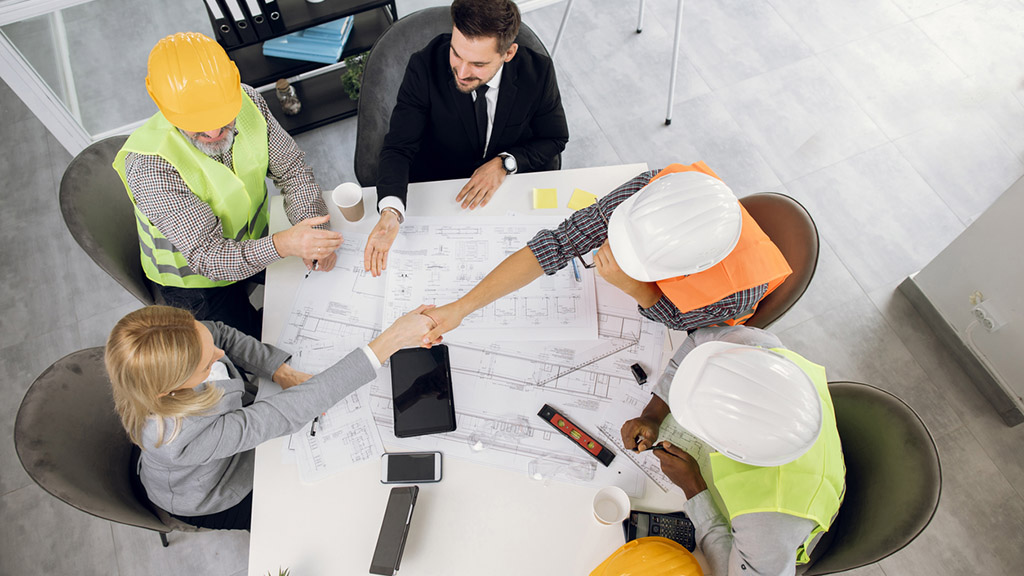Constructing for Care: Building Healthcare Facilities That Perform

Construction of healthcare facilities plays a pivotal role in shaping how care is delivered. These buildings are more than just physical structures; they are the backbone of healthcare delivery, influencing patient experiences, staff efficiency and overall care quality. The unique nature of healthcare construction demands a specialized approach, considering everything from patient privacy to advanced technological needs and strict regulations.
Specialized Considerations in Healthcare Construction
There are a number of specialized considerations that must be taken into account when building a healthcare facility, including the following:
1. Patient-Centric Design
Healthcare facilities must prioritize patient comfort and accessibility. This includes wider corridors for easy patient transport, noise reduction techniques for patient rooms, and thoughtful layout planning to reduce walking distances for both patients and staff. For example, incorporating healing gardens and natural light sources can significantly improve patient recovery experiences.
2. Infection Control
Construction materials and design must minimize the risk of infections. Negative pressure isolation rooms, advanced HEPA air filtration systems, seamless flooring, and easy-to-clean, non-porous materials for surfaces (such as stainless steel and vinyl) are essential to maintain sterile environments. In operating rooms, the use of antimicrobial coatings on surfaces can help prevent the spread of infections.
Negative pressure rooms, for instance, are used to isolate patients with infectious diseases. These rooms are designed to create a pressure differential between the room and the surrounding area, which helps to prevent the spread of infection. HEPA filtration systems removes airborne contaminants such as bacteria and viruses.
3. Accessibility
It is critical that healthcare facilities be accessible to all patients. Adequate accessibility includes features such as wheelchair ramps, accessible restrooms and oversized elevators. For example, accessible restrooms feature wider doors, grab bars and raised toilets.
4. Flexibility and Scalability
Healthcare facilities should be designed to accommodate future technological advancements and expansions. Modular designs allow for spaces to be repurposed or expanded as needed. For example, building operating rooms that can be easily updated with new medical technology helps keep the facility at the forefront of healthcare advances.
5. Life Safety
Another consideration when designing and building healthcare facilities is to prevent patient falls and other accidents and protect patients and staff in the event of a fire or other emergency. This includes features such as grab bars, non-slip flooring, rounded edges on furniture, fire-rated walls and doors, emergency exits and smoke evacuation systems.
6. Workflow
The design of a healthcare facility must support efficient workflow for staff. This includes features such as centrally located workstations that allow staff to be more responsive to patients, easy access to medical equipment so that staff can provide care more quickly and efficiently, and clear traffic flow to reduce congestion and improve safety in healthcare facilities.
7. Technology
The healthcare industry increasingly relies on technology to provide care. Therefore, healthcare facilities must have the necessary infrastructure to support the installation and use of medical equipment and other technology systems.
ALSO READ: The Top 8 Soft Skills That Lead to Success in the Construction Industry
Compliance Requirements for Healthcare Construction
Healthcare construction projects must comply with a wide range of regulations. Here are some of them.
- HIPAA (Health Insurance Portability and Accountability Act) for patient privacy and data security.
- ADA (Americans with Disabilities Act) standards for accessibility.
- Occupational Safety and Health Administration (OSHA) regulations to protect workers.
- The Joint Commission (TJC) guidelines to obtain accreditation.
- Life Safety Code, designed to protect people from fire and other hazards.
- State and local health codes that dictate specific requirements for healthcare facilities.
- Building codes that ensure the structural integrity and safety of the facility.

Innovative Solutions in Healthcare Construction
Innovation in healthcare construction not only addresses current needs but also anticipates future trends such as these:
- Sustainable design: By emphasizing energy efficiency and eco-friendly materials, sustainable design contributes to a healthier environment for patients and staff.
- Smart technology integration: The use of smart building technology, such as artificial intelligence (AI) applications and IoT (Internet of Things) devices, can enhance operational efficiency and patient care.
- Telehealth facilities: Designing spaces specifically for telehealth can accommodate the growing trend of remote healthcare consultations.
Final Word
The construction of healthcare facilities is a task that carries immense responsibility and requires specialized knowledge and expertise. Every decision, from material selection to layout planning, has a profound impact on the effectiveness of healthcare delivery.
At CIC Construction Group, we understand the complexities and demands of constructing state-of-the-art healthcare facilities. If you’re planning to develop or upgrade your healthcare project, connect with us. Our team of experts will ensure that your project meets the highest standards of quality, compliance and patient care.
